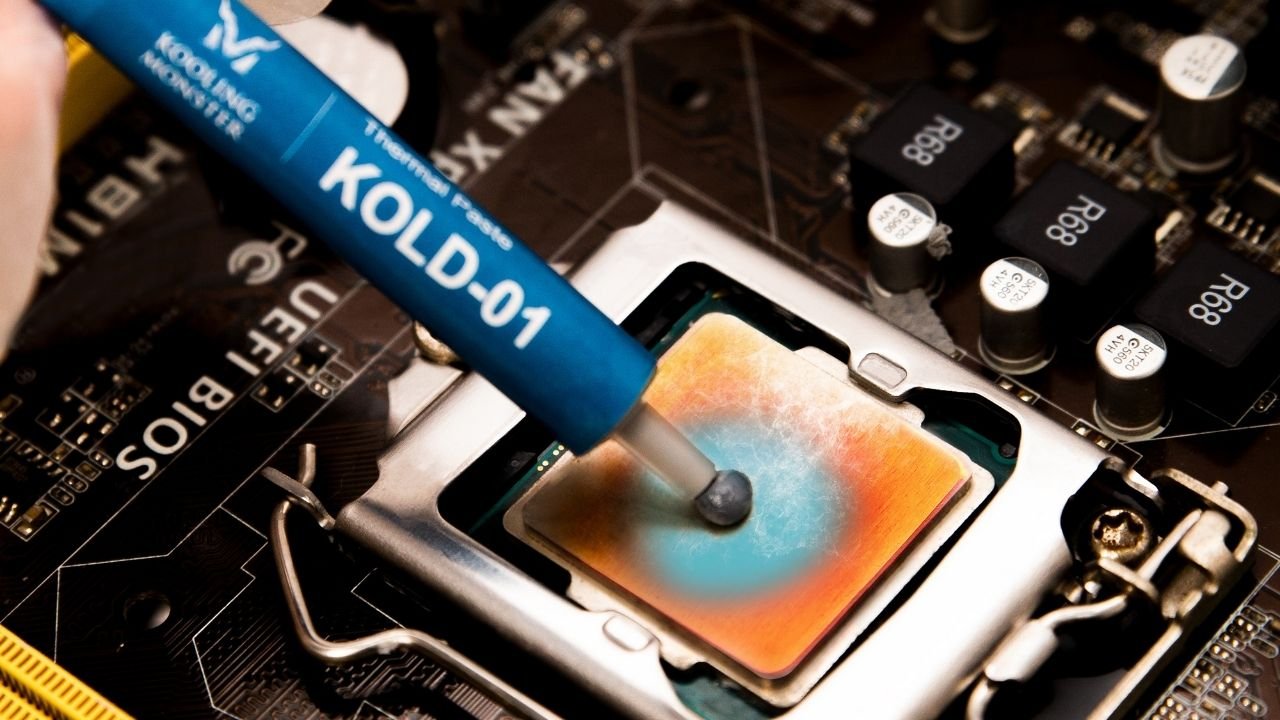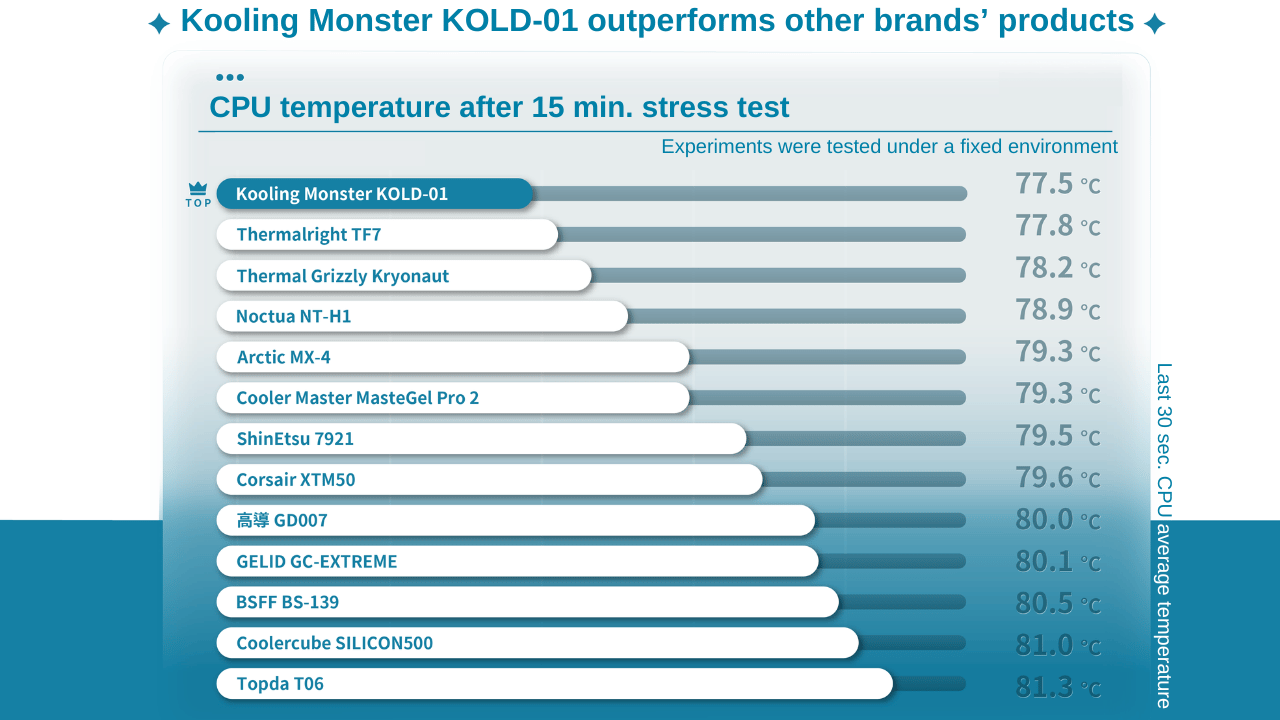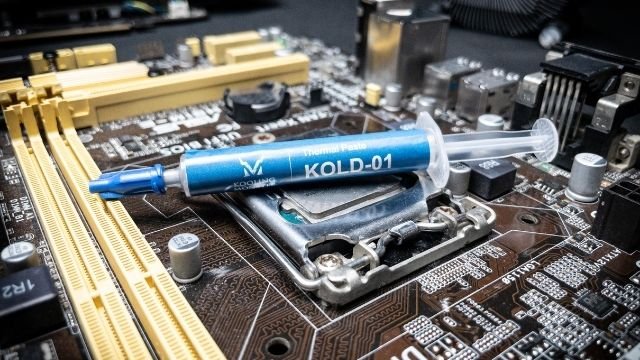The Best Thermal Paste for a CPU in 2025: Actual Performance Comparison in Real-Life Application
There are a multitude of reviews online about the performance of different thermal pastes. However, most of them focus on the numbers produced by the manufacturer and stuck onto product packaging. These numbers sometimes misrepresent actual performance statistics in a real-life scenario because they’re produced under specific conditions.
In this article, we will focus not only on the product specifications but also on real-life performance by taking multiple thermal paste brands and putting them under a stress test in a real product build. This will allow us to gauge the actual performance of each thermal paste in its intended environment.
Case study summary: the best thermal paste
In any field, “best” always depends on several categories – which we’ll get to later – but everyone can agree that for thermal paste the “best” one needs to be able to maintain the lowest CPU temperature possible.
For this experiment, we gathered 12 name-brand thermal pastes, along with our own Kooling Monster KOLD-01 and ran them individually through a 15 minute stress-test using special software. Then, using a different software, we took a 30-second average of the CPU temperature and compared the numbers. The top three were Kooling Monster KOLD-01, Thermalright TF7, and Thermal Grizzly Kryonaut, clocking in at 77.5°C, 77.8°C, and 78.2°C respectively.
As you can see from the data, Kooling Monster KOLD-01 beats out the next leading thermal paste by close to a full degree and the lowest-performing thermal paste by more than 4 degrees.
Now that’s a cold win.
It’s important to note that for this experiment, we did not include any liquid metal-based thermal pastes. Despite being great thermal conductors, Liquid metal-based thermal pastes are electrically-conductive and require their own special application and removal process.
Metrics you should look at when it comes to choosing the best thermal paste
As mentioned earlier, there are several criteria for choosing the best thermal paste. The one we addressed first was whether it can successfully keep your CPU’s temperature at an acceptable range under load. We traditionally call this “heat transferability”. Besides heat transferability, you should also look at: ease of application, whether it can support a thin, flat, and even layer, and electrical conductivity.
It’s important to know these criteria because even if your thermal paste can support a high heat transferability, if it can’t be applied easily and evenly in a thin and flat layer, then that aspect can negate its heat-transferring qualities. Additionally, electrical conductivity will give you a hint as to how meticulous the application process will be overall.
To that end, excellent heat transferability, ease of application, flat & even layer, and non-electrical conductivity are the major 4 characteristics that are often not easy to figure out from product specifications or technical data alone, which is why it’s important to conduct real-life testing.
There are also a few technical properties which can be good indicators to see if the thermal paste can achieve the above characteristics. These are: thermal resistance under pressure, thermal conductivity, achievable thickness (bond line thickness), and viscosity. In a real-world scenario, many factors can also skew these numbers and affect the overall heat transferability.
A good example of a skewed characteristic is how thermal paste with higher thermal conductivity doesn't provide better heat transfer efficiency. Logically, it stands to reason that for a thermal paste to have a high heat transfer efficiency, it would need a higher thermal conductivity. However, when taking other factors (such as the thin, flat, and even layer or viscosity) into consideration, we find that actually a thermal paste with high thermal conductivity performs worse than one with lower thermal conductivity if it cannot be spread in a thin layer. This is what we mean when we talk about thermal paste in a real-world scenario.
Testing details
This experiment measured 13 different thermal pastes’ heat transferability at an idle stage and then later under load. We believe it’s important to be completely transparent about the details of our experiment in order to build credibility as well as let others reproduce our results. To that end, we’ve included our full process for repeating the experiment below.
Process (What we measured)
In this experiment, we tested the heat transferability of 9 different thermal pastes. With each thermal paste, we:
1. Measured the temperature of the CPU while using the thermal paste for the first 3 minutes while idle and calculated the idle average
2. Used software to put the CPU under load
3. Allowed 10 minutes for the CPU to acclimate to the load
4. Used the last 30 seconds of CPU temperature readings to calculate the average under load
Setup (How we measured)
We chose to run these tests with a PC build using minimal cooling. By minimizing the effects of the cooling system on CPU temperatures, we isolated the tested thermal pastes as the variable.
For thermal paste application, we chose the 5-point method and allowed the thermal paste to be spread purely by the weight of the heatsink. The entire experiment was done in a fixed environment with 27oC room temperature.
PC Specs
CPU: Intel Core i3-10105F
Motherboard: Asus H510M-E
Cooler: Air Cooling - Golden Field
Memory: ADATA 8G
Software
AIDA 64 (for stress testing)
HWinfo (for temperature measurement)
Usually, looking at a pack of thermal paste, you might be able to find the thermal conductivity and the composition. However, there are many more factors besides thermal conductivity that can affect a thermal paste’s performance. For example, from our results, we saw that Kooling Monster KOLD-01 performed the best out of all 13 thermal pastes when put under load. But why? Compared the other thermal pastes, KOLD-01’s thermal conductivity is great but not significantly different. Well, it’s because of those other factors. Kooling Monster KOLD-01 spreads flatly, easily, and evenly under the weight of a standard heatsink. Furthermore, it uses inorganic compounds in its silicone composition which allows it to remain an effective gap-filler through many heat cycles.
Kooling Monster KOLD-01 exhibits great heat transferability, easy application, can support a thin and flat layer, and is not electrically-conductive and therefore performs better and is easier to use than other thermal pastes. When looking for your next thermal paste, you should consider all of these factors before buying.
FAQ
What are the major factors to consider when choosing a thermal paste?
When choosing a thermal paste, factors such as heat transferability, ease of application, ability to support a thin, flat, and even layer, and electrical conductivity should be considered.
Why does a thermal paste with high thermal conductivity not necessarily provide better heat transfer efficiency?
Thermal pastes with high thermal conductivity might not provide better heat transfer efficiency if they can't be spread thinly and evenly. Other factors such as viscosity and achievable thickness also impact heat transfer efficiency.
How does Kooling Monster KOLD-01 outperform other thermal pastes?
Kooling Monster KOLD-01 outperforms other thermal pastes due to its ease of application, ability to spread flatly and evenly under a standard heatsink's weight, and its use of inorganic compounds in its silicone composition, enabling it to endure multiple heat cycles.




